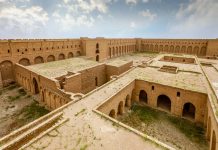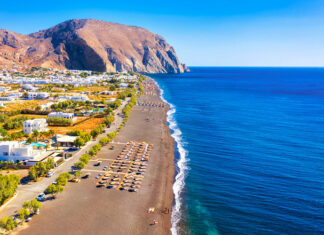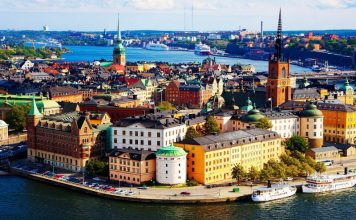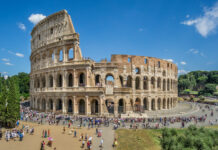Mount Fuji, Japan

Rising majestically to an elevation of 12,389 feet (3,776 meters), Mount Fuji is Japan’s highest peak and one of the most iconic volcanoes in the world. Located about 60 miles southwest of Tokyo, this symmetrical stratovolcano is a UNESCO World Heritage Site and an enduring symbol of Japan’s culture and natural beauty.
Mount Fuji is renowned for its perfect cone shape, which is often capped with a beautiful snow mantle during the winter months. The mountain’s beauty is not limited to its appearance alone; it is also surrounded by five serene lakes, known as the Five Lakes of Fuji (Fuji-goko), which enhance its picturesque charm.
For those seeking a challenging adventure, climbing Mount Fuji during the official climbing season (July to early September) is a popular endeavor. The views from the summit are nothing short of breathtaking, with a sea of clouds below and the vast expanse of Japan before you. Mount Fuji’s significance in Japanese culture, its breathtaking landscapes, and its majestic presence make it a must-visit volcano.
Arenal Volcano, Costa Rica
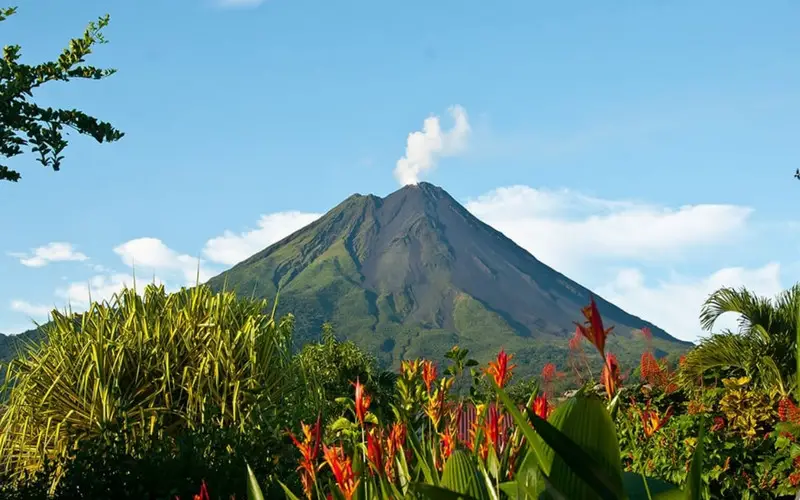
Arenal Volcano in Costa Rica offers a unique blend of natural beauty and thrilling volcanic activity. This stratovolcano is a prominent feature of Arenal Volcano National Park, and it rises above the lush rainforests and pristine Lake Arenal.
What makes Arenal particularly stunning is its occasional eruptions and the accompanying nighttime spectacle of glowing lava flows. The volcano was highly active from 1968 until 2010, providing a dynamic and thrilling experience for onlookers. While Arenal is currently in a resting phase, the stunning landscapes, hot springs, and rich biodiversity in the area continue to make it a remarkable destination for travelers.
Visitors to Arenal can explore the many hiking trails, go wildlife watching, and unwind in the natural hot springs that abound in the region. The juxtaposition of volcanic activity against the verdant beauty of the surrounding area makes Arenal Volcano a one-of-a-kind destination.
Mount Teide, Spain (Tenerife)
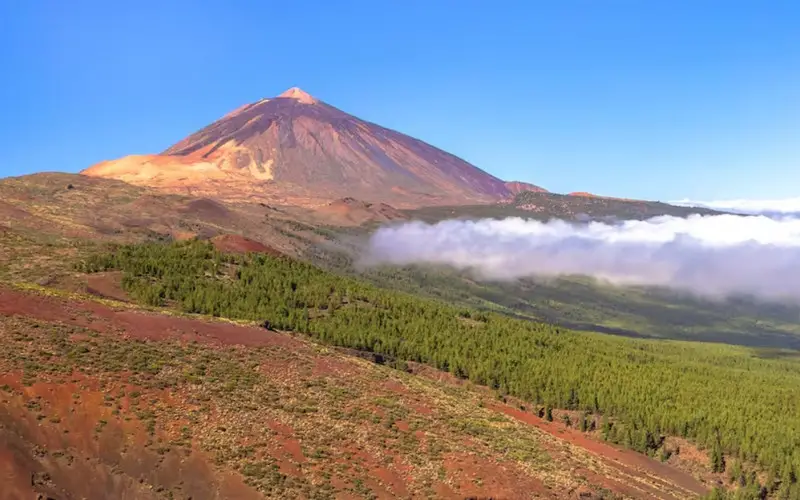
Mount Teide, situated on the Spanish island of Tenerife in the Canary Islands, is the highest point in Spain and the third-largest volcano on Earth when measured from its base on the ocean floor. The unique location of Mount Teide, surrounded by the vast expanse of the Atlantic Ocean, lends it an otherworldly quality.
One of the most remarkable features of Mount Teide is its lunar-like landscapes at higher elevations. As you ascend the volcano, you’ll encounter a stark, surreal terrain that has served as a stand-in for otherworldly planets in science fiction films. The stark contrast between this barren terrain and the lush greenery at lower altitudes creates a fascinating visual juxtaposition.
The Teide National Park, where the volcano is located, is a UNESCO World Heritage Site and a testament to the rich geological history of the Canary Islands. Visitors can take a cable car ride to the summit, explore the unique rock formations, and marvel at the clear night skies. Mount Teide offers a compelling mix of natural beauty, geology, and an otherworldly atmosphere that sets it apart from other volcanoes.
Cotopaxi, Ecuador
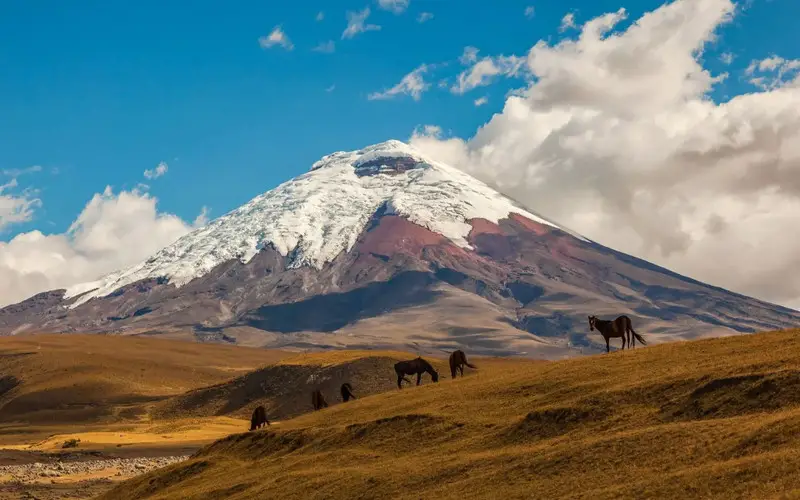
Cotopaxi is a towering stratovolcano in the Andes of Ecuador and one of the highest active volcanoes in the world, standing at 19,347 feet (5,897 meters). Its nearly perfect conical shape is often adorned with a pristine snow cap, creating a stunning backdrop for anyone visiting the area.
Despite its imposing presence and the occasional eruptions, Cotopaxi has become a popular destination for mountaineers and adventure seekers. Climbing Cotopaxi is a challenging yet rewarding experience, allowing you to witness breathtaking views of the surrounding Andean landscapes.
The Cotopaxi National Park, where the volcano is located, is also a place of ecological importance, home to a variety of flora and fauna. This combination of natural beauty, adventure, and ecological significance makes Cotopaxi a stunning destination for those who appreciate both the power of nature and its delicate balance.
Mount St. Helens, USA
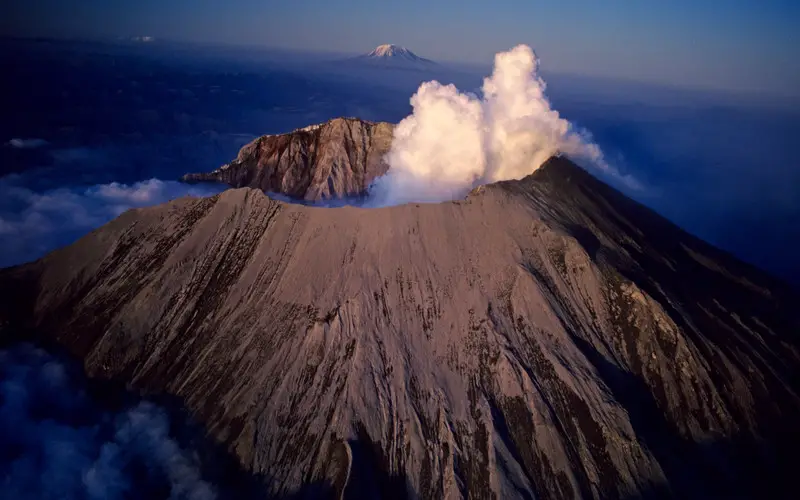
Mount St. Helens in Washington State, USA, is a volcano that gained notoriety with its catastrophic eruption in 1980. This explosive event significantly altered the landscape, and the volcano’s summit lost more than 1,300 feet of elevation.
Today, Mount St. Helens has transformed into a living laboratory for the study of volcanic and ecological recovery. The Mount St. Helens National Volcanic Monument offers visitors a chance to explore the impact of volcanic eruptions on the environment and the resilience of life in the face of such adversity.
The surrounding area, including Spirit Lake and the pumice plain, provides unique opportunities for hiking and exploring the evolving landscape. While Mount St. Helens may not have the classic, picturesque appearance of some other volcanoes, its history and the ongoing natural rebirth of the region make it a compelling and beautiful destination for those interested in the science and wonder of volcanic activity.






